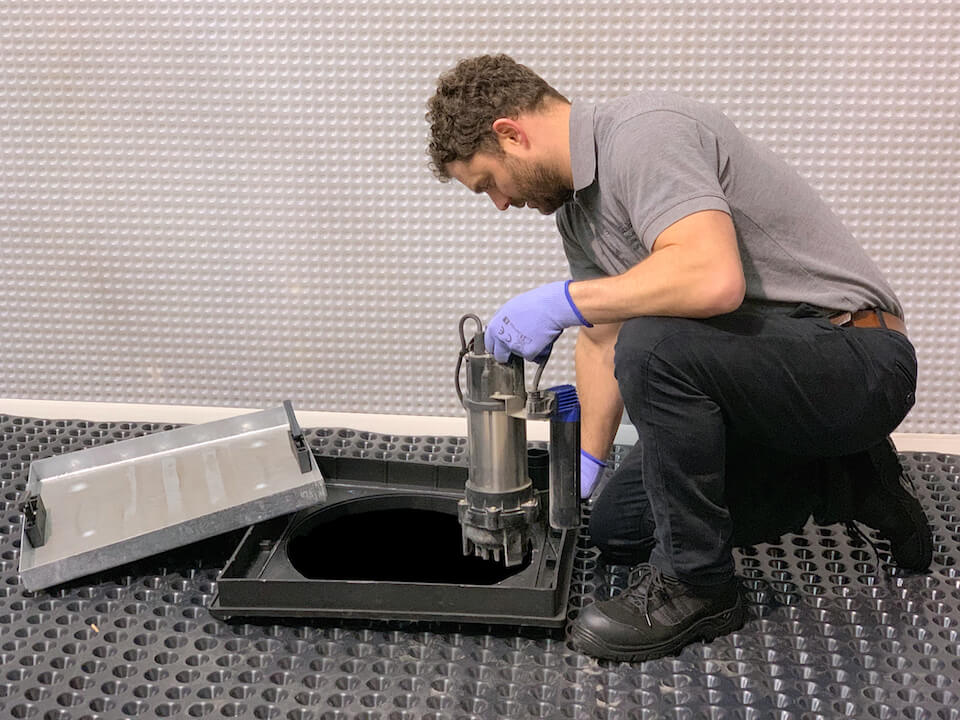What're your ideas about How To Effectively Clean A Sump Pump?

Sump pumps are critical parts in many homes, especially in locations susceptible to flooding or excessive dampness. They assist avoid water damages by effectively eliminating excess water from cellars or crawl spaces. Nevertheless, like any other appliance, sump pumps need routine upkeep to ensure they work efficiently when needed one of the most. Cleaning your sump pump is an essential part of its upkeep, and recognizing how to do it correctly can conserve you from pricey repairs and prospective catastrophes.
Introduction
Maintaining a clean sump pump is important for its proper functioning and longevity. Neglecting this necessary task can result in clogs, breakdowns, and eventually, water damages to your property. Therefore, finding out how to clean up a sump pump is critical for house owners who rely upon these devices to keep their basements dry and safeguarded.
Signs of a Dirty Sump Pump
Recognizing when your sump pump requires cleansing is important for stopping possible breakdowns. Some common signs that indicate a dirty sump pump consist of weird sounds throughout procedure, lowered water flow, and noticeable debris in the pit. If you discover any one of these signs, it's important to cleanse your sump pump without delay to stay clear of any type of more problems.
Getting ready for Cleansing
Before you start cleansing your sump pump, it's essential to take some safety and security precautions. Start by shutting down the power to the pump to stay clear of any electric mishaps. Additionally, put on proper safety equipment, such as gloves and safety glasses, to shield on your own from dirt, particles, and potential pathogens.
Understanding the Sump Pump
Before diving into the cleaning process, it's vital to have a standard understanding of how a sump pump functions. Usually mounted in a pit or container below the cellar flooring, a sump pump includes numerous key parts, including a pump, a float switch, and a discharge pipeline. When water accumulates in the pit, the float button triggers the pump, which after that pumps the water out through the discharge pipeline, away from the building's foundation.
Step-by-step Guide to Cleansing a Sump Pump
Turning off the Power
Begin by disconnecting the power supply to the sump pump to stop any type of mishaps while cleaning.
Looking For Appropriate Performance
Prior to re-installing the pump, do a fast examination to ensure that the float switch triggers the pump properly. Pour some water into the sump pit and observe the pump's operation. If every little thing is operating appropriately, you can rebuild the pump and reconnect the power supply.
Getting Rid Of Particles and Dirt
Use a bucket or an inside story to remove any kind of visible debris, dust, or sediment from the sump pit. Dispose of the particles properly to stop it from blocking the pump or the discharge pipe.
Cleaning the Pump and Float Change
Once the pit is clear of particles, carefully remove the pump from the pit. Inspect the pump and the float switch for any type of indicators of damage or wear. Use a soft brush or fabric to cleanse the surfaces and get rid of any gathered gunk.
Purging the System
After cleaning up the pump and float switch, flush the sump pit with clean water to remove any type of staying dirt or sediment. This will certainly assist ensure that the pump runs efficiently and efficiently.
Maintenance Tips to Maintain Your Sump Pump Clean
In addition to periodic cleansing, there are a number of upkeep pointers you can comply with to maintain your sump pump in ideal problem:
Verdict
Cleansing your sump pump is an essential facet of its maintenance and guarantees that it runs successfully when you need it one of the most. By adhering to the steps described in this guide and including regular upkeep into your regimen, you can extend the life-span of your sump pump and secure your home from water damages.
6 STEPS ON HOW TO CLEAN A SUMP PUMP PROPERLY
UNDERSTANDING SUMP PUMPS
Your sump pump plays a crucial role in protecting your home by managing and removing excess water. It primarily functions as a “shield”, guarding your basement against the damaging effects of water accumulation. The pump is housed in a sump pit in the lowest part of your basement, and its job is to pump out any water that collects there.
During heavy rainfalls or when snow melts rapidly, water can infiltrate your basement, posing potential risks like flooding, structural damage, and harmful mold growth. Here, the sump pump springs into action, pumping out the intruding water and directing it away from your home.
SAFETY FIRST
Before cleaning, remember to prioritize safety. Disconnect the sump pump from the power source to prevent any accidental electric shocks. Also, wear sturdy gloves to protect your hands from any sharp or dirty components within the pump.
REMOVE THE SUMP PUMP
After ensuring your safety, the next step is to remove the sump pump from its pit. Doing this might require careful maneuvering as you don’t want to damage any pump components. Once removed, clean the sump pit to remove any accumulated debris or sludge.
INSPECT THE PUMP
Inspect the pump for any visible signs of wear or damage. Check the power cord, float switch, and impeller housing. If any components look worn out or damaged, consider replacing them to ensure optimal performance.
CLEAN THE PUMP
Thoroughly clean the pump with warm, soapy water. Make sure to rid it of any dirt, gravel, or other debris that might impede its performance. You can use a toothbrush to clean the small, hard-to-reach parts of the pump.
REINSTALL THE SUMP PUMP
Reinstall the pump into the sump pit Make sure it’s positioned correctly to remove the water effectively Once it’s back in place, reconnect it to the power source TEST THE PUMP
Finally, pour some water into the pit to ensure the pump works correctly. It should start automatically and begin pumping out the water; if it doesn’t, check the power source and the positioning of the pump.
Remember, while cleaning your sump pump is an essential part of home maintenance, hiring a professional plumber for a thorough inspection and cleaning at least once a year is also important. This will ensure that your pump is in optimal condition, ready to protect your home from potential water damage.
BEST PRACTICES FOR CLEANING SUMP PUMP DISCHARGE PIPES
Regular Inspection: Regularly inspect your discharge pipes, especially during heavy rainfall or snowmelt periods. Look for any signs of blockage or damage. Early detection of problems can prevent serious issues down the line. Periodic Cleaning: Over time, sediment and debris can accumulate in the discharge pipes, impeding the flow of water. Regular cleaning helps keep the pipes clear and functioning efficiently. You can use a high-pressure water jet to effectively clean the pipes. Insulation During Winter: In colder climates, discharge pipes can freeze, blocking the outflow of water. Protect your discharge pipes from freezing temperatures by insulating them with foam pipe insulation. This will ensure the sump pump can continue to discharge water even in freezing conditions. Proper Positioning: The discharge pipe should be positioned to direct water away from your home’s foundation. Improper positioning can lead to water seeping back into the basement. Ensure the pipe is long enough and angled correctly. Installation of a Check Valve: A check valve prevents water from flowing back into your sump pit after the pump has pushed it out. Installing a check valve helps maintain the efficiency of your sump pump and reduces the risk of flooding. Minimize Pipe Turns: Every curve or turn in the discharge pipe can decrease the efficiency of water flow. By minimizing turns and bends in your discharge pipe, you can increase the efficiency of your sump pump. https://www.fullspeedplumbing.com/how-to-clean-a-sump-pump-properly9999/

We had been shown that report about How to Care for Your Sump Pump from a friend on our other web page. Sharing is nice. Helping people is fun. I treasure reading our article about How To Effectively Clean A Sump Pump.
Get Offer